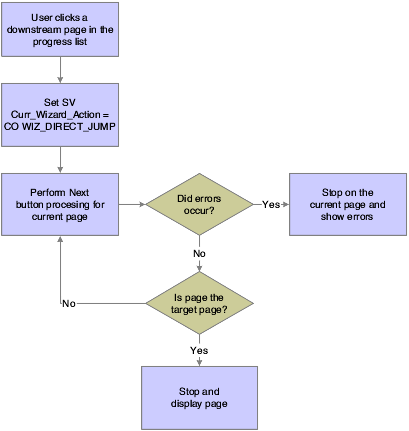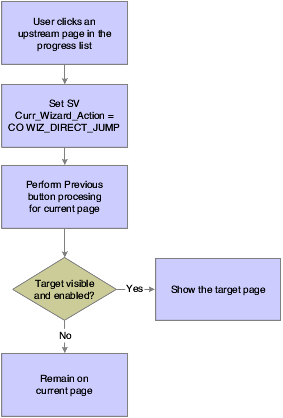Jumping Up- and Downstream
When the progress list is enabled, users can access previously-visited pages directly, effectively skipping one or more tasks if they select a page that is not immediately before or after the current page in the index.
When a user jumps downstream, runtime loops through each page between the start and target inclusively, applying Next button processing which includes error processing. If a page between the starting page and the target page throws an error in the course of Next button processing, runtime halts processing and displays the page on which the error occurred. If the user successfully jumps to the target page, runtime performs the page entry process.
This flowchart illustrates the runtime processing that occurs when the user tries to jump to a downstream page:

When a user jumps upstream, runtime performs Previous button processing on the current page and then displays the target page as long as that page is visible and enabled. If the processing produces errors, runtime displays them, but it does not prevent the display of the target page. Runtime does not process the pages between the current page and the destination page because it is assumed that upstream pages should not be affected by downstream pages. Furthermore, runtime does not run the page entry process because nothing should change on the destination page.
If the user wants to change previously entered data, he or she may do so, but must click Next to save the changes.
This flowchart illustrates the runtime processing that occurs when the user tries to jump to an upstream page:
